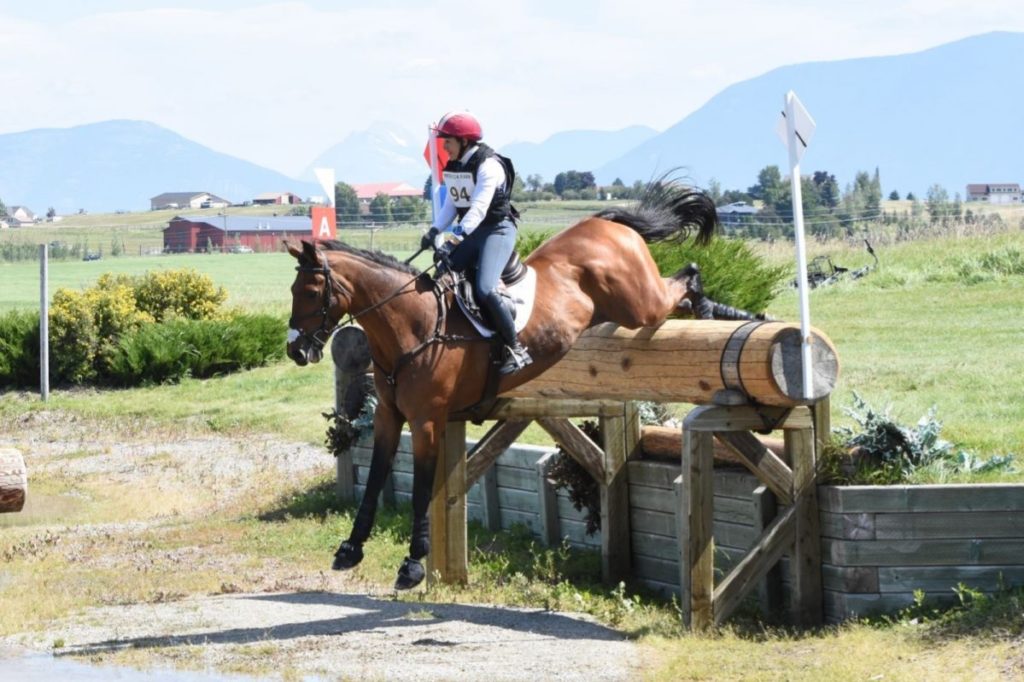This piece was penned by sports and performance psychologist Dr. Darby Bonomi. It originally appeared on our sister site, Eventing Nation.
It’s often quoted that up to 90% of sports performance is psychological. Even it it’s not quite that high, how much time do you spend working on the mental and emotional parts of your rides? Most equestrians focus almost exclusively on technical and physical training and pay minimal attention to the psychological. What’s going on here? We all know that we can be physically fit and technically competent, but if we leave our psychological game at the start box, our ride suffers.
How do I define psychological? For my purposes it’s the mental (thinking) and the emotional (feeling) components of the sport. The emotional aspect also links to the body (physical) since we usually express feelings in our bodies. For instance, when you’re nervous, your body is tense. If you feel calmer and more grounded, your body will relax. Conversely, if your body is relaxed, you will feel emotionally calmer.
 Olympian Lauren Billys, a client of Dr. Bonomi, on Castle Larchfield Purdy at Rebecca Farm in 2019. Photo by Shelby Allen.
Olympian Lauren Billys, a client of Dr. Bonomi, on Castle Larchfield Purdy at Rebecca Farm in 2019. Photo by Shelby Allen.
Do you want to elevate your performance, both at home and at the shows? Let’s get you going in the right direction!
In my experience, there are 4 essential preparation steps that increase your chances of optimal performance. These steps are interrelated, but I find it’s useful to think of them as separate stages. And, while these steps are essential for show performance, I urge my riders to practice them daily so they become routine. Besides, don’t you want to bring your best self to every ride?
One note: while the steps are cumbersome to describe, the process should not take more than a few minutes, especially once it becomes routine.
Step 1: Become fully present and ‘in’ your body
Top performance requires us to be fully centered in our bodies and emotionally present. One of my young riders sums it up: “I need to feel calm and have my brain in my body.” How do you do this? There are many ways, and athletes use different tools depending on their own challenges and strengths. Here are a few tips: create a quiet moment in your mind and take note of your physical presence. Actively feel your feet on the ground, and call yourself to be fully here, right now. Place your attention on your physical space and create an imaginary boundary between you and everything else. Take a few deep cleansing breaths and with each one, let yourself get heavier and closer to the ground. Become increasingly aware of your body right here and now and let go of any mental chatter or unnecessary emotional energy. Some people find it helps to repeat a phrase, such as ‘I am grounded in present time.’ I think it helps to do all of this with eyes closed. This whole process can take only a few minutes.
Step 2: Set intentions for the ride
This is the mental part. How do you do this? Give yourself 3 tasks for the round or ride. Trust me, 3 is enough. These tasks, or mini-goals, are things that you have control of and can do. These might sound something like, “breathe in every corner, ride forward out of the turns, and ride every stride.” Obviously you will be doing a lot more than these things during your ride, but most of it you don’t need to be reminded of. These tasks are things you are working on, and that if you accomplish, you will give yourself a good grade—regardless of what score the judge throws.
Step 3: Turning on ‘the jets’
Ok, now set aside the mental part and turn on your brilliance. In order to have a good ride, you have to show up. In order to have a brilliant ride, you have to show up brilliantly. This step can also be known as ‘getting into the zone.’ You can practice your tempi changes until the cows come home, but if you walk into the ring with your jaws clenched and your energy drawn in, you won’t shine brilliantly and neither will your horse.
How do you do this? This step will require some practice and experimentation. Think back to a time when you felt brilliant. Do you remember that performance? Pull it up in your mind. Enlarge that experience and feel it again. Find a word or phrase that captures it and practice turning on that feeling. For some people it’s a color or image. For others, it’s a phrase, such as, ‘just ride,’ or ‘bring on the sparkle.’ Linking yourself to a joyful experience of brilliance will help you generate that shine in the ring every time.
Step 4: Review and recover
This step, while it takes place after the ride, is essential to setting up for the next ride.
How does it work? Now that you did your ride, evaluate it: did you accomplish your three tasks? How well? What would you tweak for next time? Was it a disaster? OK, review that too, make a new plan, and let it go. Did you make a technical mistake or a mental mistake? Be objective, but don’t stew. I let my clients hang on ‘mistakes’ for only 10 minutes. After that, it’s self abuse. Let it go. Make a new plan and go forward. Remember: proper mental recovery from every ride is essential to set you up for the next ride.
Have questions? Reach out! I love to hear from my readers!
About Dr. Bonomi
Darby Bonomi, PhD is a Sport and Performance Psychologist. She works with equestrians of all disciplines, and other athletes, to achieve optimal performance in and out of the saddle. For more information and to contact Dr. Bonomi, click here.

